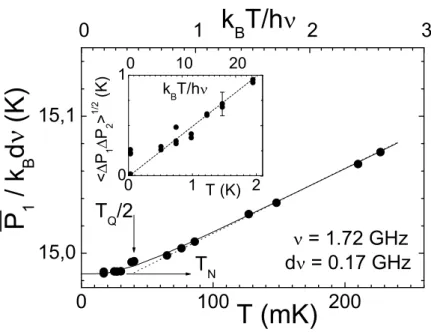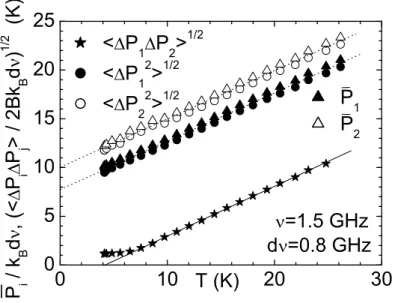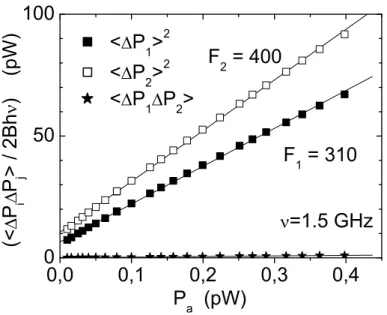Hanbury-Brown Twiss correlations to probe the population statistics of GHz photons emitted by conductors
Texte intégral
Figure




Documents relatifs
Although the effect is easily explained in the context of classical wave optics, as in fig- ure 1, the HBT experiment stimulated deep questions about the quantum description of
To get the highest homodyne efficiency, the phases of the quantum field and local oscillator have to be matched (see Section III). Assuming the phase θ LO of the local oscillator to
Besides the electrical transport, measurements of the resonance frequency allows for determi- nation of the thermal expansion if needle shaped samples with high conductivity are
départ d’arrivée Valeur Augmentation/ Diminution. Variation en
Thus, it becomes possible to obtain data on particle density, shape, specific composition and on formation or deposition mechanisms of chemical compounds.. 3.1
The present technique is currently being applied to pure helium and while only preliminary results are available at present it is evident that secondary electron emission plays
photodissociation amplitudes to different magnetic sublevels of the fragments. This results in large differences between classical and quantum results for the degree of